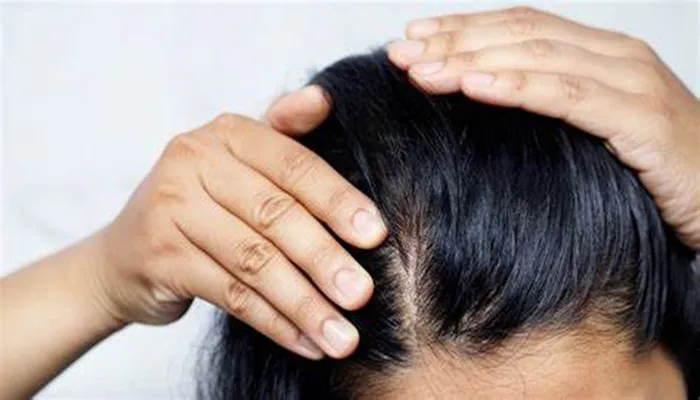Direct Hair Implantation (DHI) has become a popular and effective solution for individuals seeking to address hair loss. One of the key concerns for many patients considering hair transplant procedures is the potential for scarring. In this article, we will explore whether DHI leaves scarring and what patients can expect in terms of visible marks and long-term outcomes.
Understanding DHI and Its Minimally Invasive Nature
Direct Hair Implantation (DHI) is a modern hair transplant technique that involves the direct implantation of hair follicles into the scalp using a specialized tool called the Choi Pen. This method is known for its precision, minimal invasiveness, and natural-looking results. Unlike traditional hair transplant methods, such as Follicular Unit Extraction (FUE) or Follicular Unit Transplantation (FUT), DHI focuses on minimizing trauma to the scalp and surrounding tissues.
Scarring in Hair Transplant Procedures
Scarring is a common concern in hair transplant procedures, as any surgical intervention can potentially leave marks on the scalp. However, the extent and visibility of scarring depend on the technique used and the skill of the surgeon.
Traditional Methods and Scarring
Follicular Unit Transplantation (FUT): This method involves removing a strip of skin from the donor area and then extracting individual follicles from the strip. The resulting linear scar can be noticeable, especially if the hair is worn short.
Follicular Unit Extraction (FUE): This technique involves extracting individual follicles directly from the donor area, leaving small puncture marks. While these marks are generally small and less noticeable than FUT scars, they can still be visible, especially in patients with lighter hair or those who prefer to wear their hair short.
Scarring with DHI
One of the primary advantages of DHI is its minimal invasiveness, which significantly reduces the risk of noticeable scarring. Here’s how DHI compares to other methods.
Minimal Puncture Marks
Extraction Sites: During DHI, hair follicles are extracted from the donor area using a specialized tool. The extraction sites are very small and typically appear as tiny red dots. These marks are much smaller than those left by traditional FUE and are less likely to be noticeable.
Healing Process: The small puncture marks heal quickly, usually
within a few days to a week. As they heal, they become less visible and blend with the surrounding scalp.
Natural Appearance
Blending with Hair: The tiny extraction sites are often hidden by the surrounding hair, making them virtually undetectable. Even in patients who wear their hair short, the marks are usually not noticeable once fully healed.
Long-Term Results: Over time, the donor area continues to heal and blend seamlessly with the rest of the scalp. Most patients report that the donor area looks and feels normal after a few months.
Factors Influencing Scarring
Despite the minimally invasive nature of DHI, several factors can influence the degree of scarring after the procedure.
Surgeon’s Skill and Experience: The expertise of the hair transplant surgeon is crucial. A skilled and experienced surgeon will have a deep understanding of the scalp’s anatomy and the proper technique for DHI. They will be able to perform the extraction and implantation with precision, minimizing damage to the surrounding tissue and reducing the risk of excessive scarring. In contrast, an inexperienced surgeon may not execute the procedure as accurately, potentially leading to larger or more noticeable scars.
Patient’s Healing Ability: Each person’s body has a unique healing process. Some individuals naturally heal more quickly and with less visible scarring, while others may be prone to developing hypertrophic or keloid scars. Factors such as age, overall health, and genetic predisposition can all impact how the body heals after a DHI transplant. For example, younger patients generally tend to heal better, and those with certain medical conditions like diabetes may experience slower healing and a higher risk of scarring.
Post – operative Care: Proper post – operative care is essential for minimizing scarring. Patients are typically given detailed instructions on how to care for the scalp after the DHI procedure. This includes keeping the scalp clean, avoiding scratching or picking at the healing sites, and following any prescribed medications or treatments. Failure to adhere to these instructions can increase the risk of infection, which can lead to more significant scarring. For instance, if the extraction or implantation sites become infected, the body’s healing response may be altered, resulting in larger and more visible scars.
Conclusion
DHI is a highly effective and minimally invasive hair transplant technique that significantly reduces the risk of noticeable scarring. The small puncture marks left by the Choi Pen heal quickly and are often hidden by the surrounding hair. While some minor marks may be visible during the initial healing phase, they typically become undetectable over time.
If you are considering a hair transplant and are concerned about scarring, DHI is an excellent option. Consulting with a qualified hair transplant specialist who can provide personalized advice and ensure the highest level of precision and care is essential for achieving the best possible results. With proper technique and aftercare, DHI can provide natural-looking hair restoration with minimal impact on the scalp.
Related topics:
DHI Hair Transplant Cost in Delhi: Everything You Need to Know
FUE vs DHI: Which Hair Transplant Technique Is Better?


